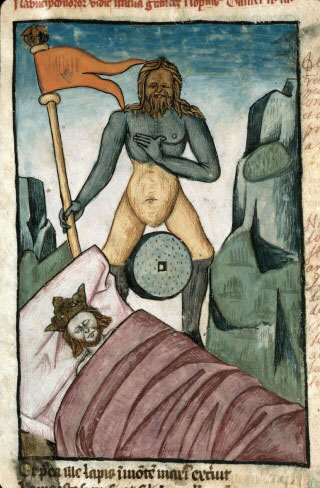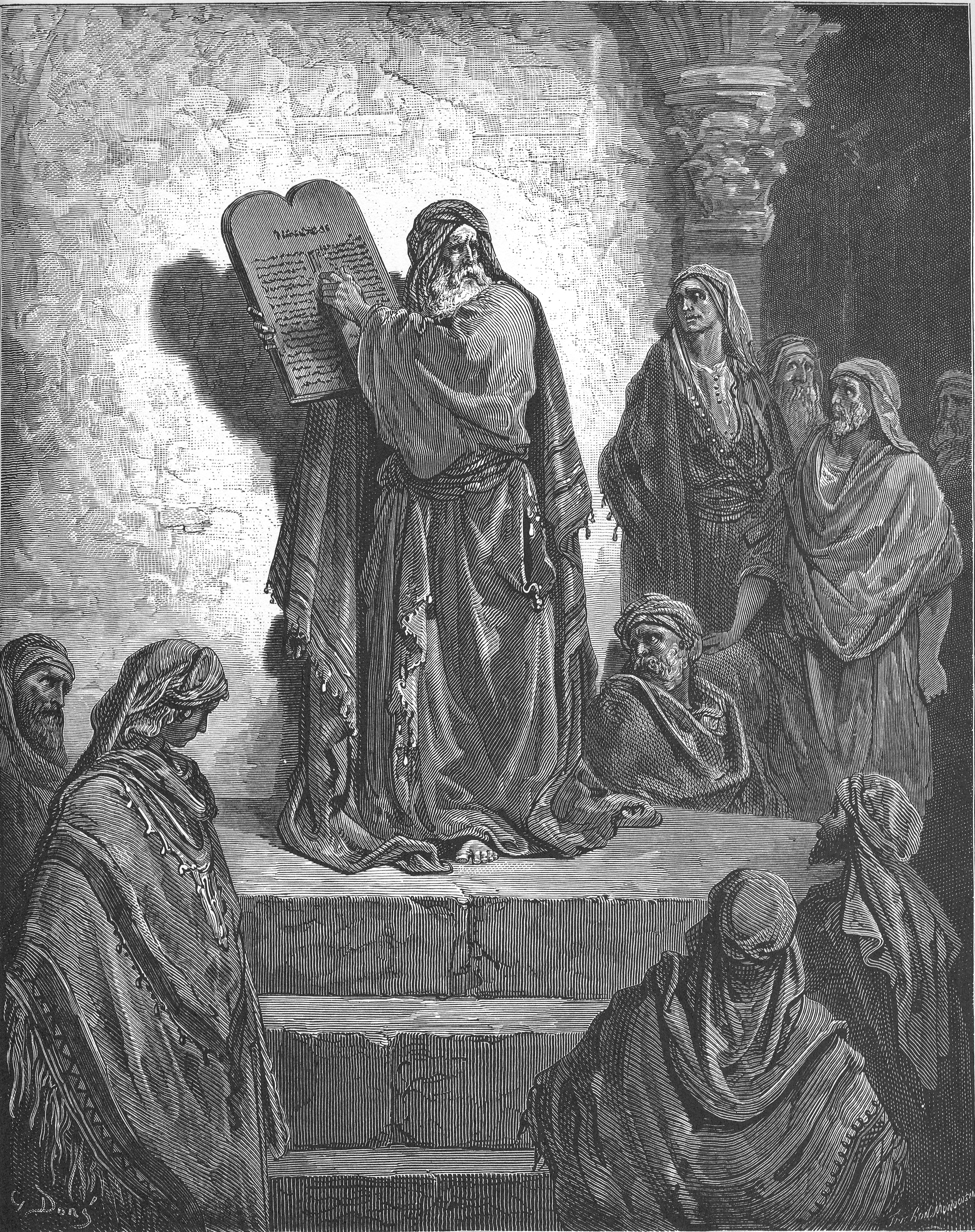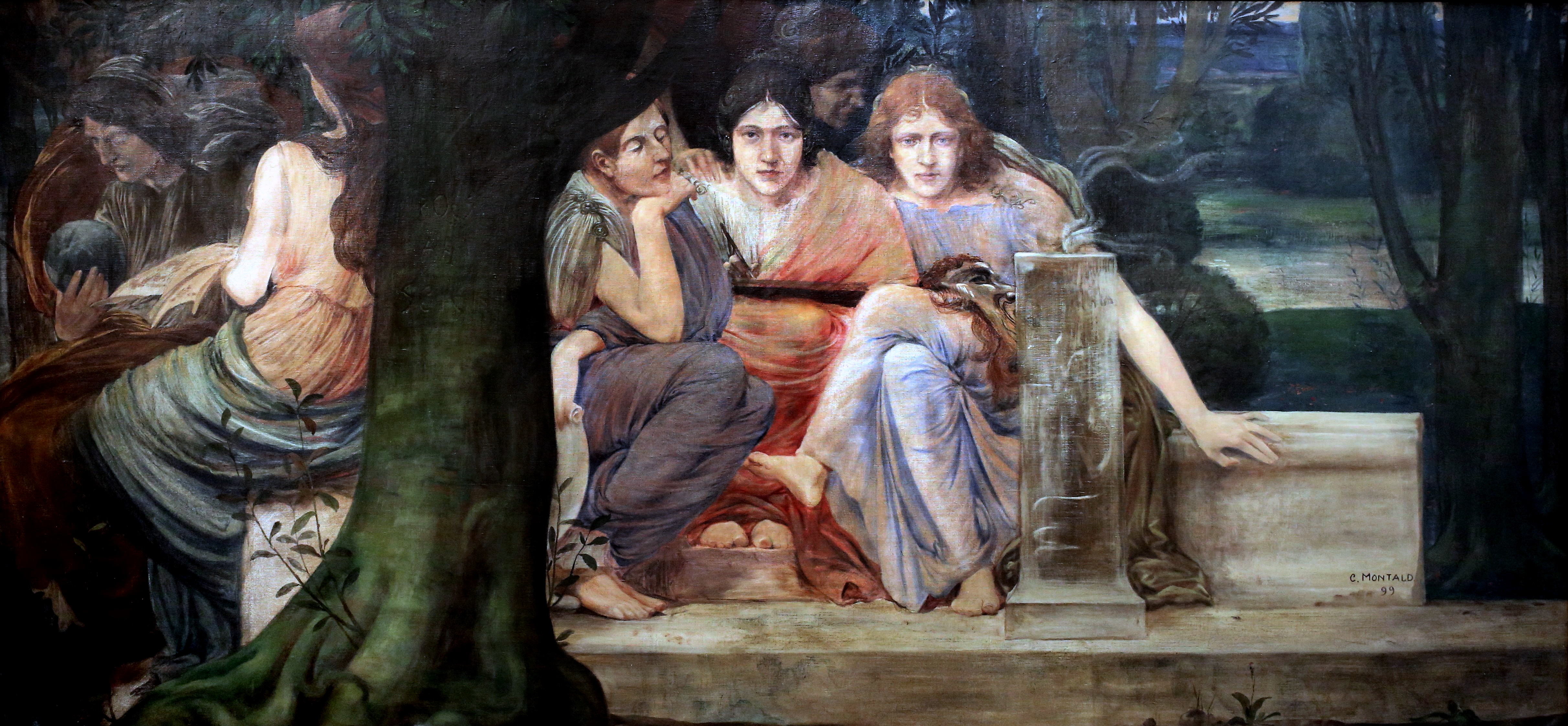|
Apocalypse Of Sedrach
Written between the 2nd and 5th centuries AD, in Greek, the Apocalypse of Sedrach, also known as the Word of Sedrach, is an ancient apocryphal text. It is preserved only in one 15th century manuscript (Bodleian Cod.Misc.Gr. 56, fols. 92–100). The text was published by M. R. James and translated into English by A. Rutherford. Apparently the original apocalypse was composed between AD 150 and 500, it was joined with a lengthy sermon on love to reach its final form shortly after AD 1000 (Agourides, 606). The original was probably Jewish, but this was later edited to take on a Christian flavour. The name of the titular figure, ''Sedrach'' may simply be the Greek language, Greek form of ''Shadrach, Meshach, and Abednego, Shadrach'', the name of one of the three individuals put into the Shadrach, Meshach, and Abednego#Fiery furnace, fiery furnace in the Book of Daniel. It may however simply be a corruption of ''Esdras'', the Greek form of ''Ezra'', particularly since the text has much ... [...More Info...] [...Related Items...] OR: [Wikipedia] [Google] [Baidu] |
Apocryphal
Apocrypha are works, usually written, of unknown authorship or of doubtful origin. The word ''apocryphal'' (ἀπόκρυφος) was first applied to writings which were kept secret because they were the vehicles of esoteric knowledge considered too profound or too sacred to be disclosed to anyone other than the initiated. ''Apocrypha'' was later applied to writings that were hidden not because of their divinity but because of their questionable value to the church. In general use, the word ''apocrypha'' has come to mean "false, spurious, bad, or heretical". Biblical apocrypha are a set of texts included in the Septuagint and the Latin Vulgate, but not in the Hebrew Bible. While Catholic Church, Catholic tradition considers some of these texts to be deuterocanonical books, deuterocanonical, and the Orthodox Churches consider them all to be canonical, Protestants consider them apocryphal, that is, non-canonical books that are useful for instruction. Luther's Bible placed them in a ... [...More Info...] [...Related Items...] OR: [Wikipedia] [Google] [Baidu] |
James H
James is a common English language surname and given name: *James (name), the typically masculine first name James * James (surname), various people with the last name James James or James City may also refer to: People * King James (other), various kings named James * Saint James (other) * James (musician) * James, brother of Jesus Places Canada * James Bay, a large body of water * James, Ontario United Kingdom * James College, a college of the University of York United States * James, Georgia, an unincorporated community * James, Iowa, an unincorporated community * James City, North Carolina * James City County, Virginia ** James City (Virginia Company) ** James City Shire * James City, Pennsylvania * St. James City, Florida Arts, entertainment, and media * ''James'' (2005 film), a Bollywood film * ''James'' (2008 film), an Irish short film * ''James'' (2022 film), an Indian Kannada-language film * James the Red Engine, a character in ''Thomas the Tank En ... [...More Info...] [...Related Items...] OR: [Wikipedia] [Google] [Baidu] |
Greek Language
Greek ( el, label=Modern Greek, Ελληνικά, Elliniká, ; grc, Ἑλληνική, Hellēnikḗ) is an independent branch of the Indo-European family of languages, native to Greece, Cyprus, southern Italy (Calabria and Salento), southern Albania, and other regions of the Balkans, the Black Sea coast, Asia Minor, and the Eastern Mediterranean. It has the longest documented history of any Indo-European language, spanning at least 3,400 years of written records. Its writing system is the Greek alphabet, which has been used for approximately 2,800 years; previously, Greek was recorded in writing systems such as Linear B and the Cypriot syllabary. The alphabet arose from the Phoenician script and was in turn the basis of the Latin, Cyrillic, Armenian, Coptic, Gothic, and many other writing systems. The Greek language holds a very important place in the history of the Western world. Beginning with the epics of Homer, ancient Greek literature includes many works of lasting impo ... [...More Info...] [...Related Items...] OR: [Wikipedia] [Google] [Baidu] |
Shadrach, Meshach, And Abednego
Shadrach, Meshach, and Abednego (Hebrew names Hananiah, Mishael, and Azariah) are figures from the biblical Book of Daniel, primarily chapter 3. In the narrative, the three Hebrew men are thrown into a fiery furnace by Nebuchadnezzar II, King of Babylon for refusing to bow to the king's image. The three are preserved from harm and the king sees four men walking in the flames, "the fourth ... like the Son of God". They are first mentioned in Daniel 1, where alongside Daniel they are brought to Babylon to study Chaldean language and literature with a view to them serving at the King's court, and their Hebrew names are replaced with Chaldean or Babylonian names. The first six chapters of Daniel are stories dating from the late Persian/early Hellenistic period, and Daniel's absence from the story of the Hebrew children in the fiery furnace suggests that it may originally have been independent. It forms a pair with the story of Daniel in the lions' den, both making the point that ... [...More Info...] [...Related Items...] OR: [Wikipedia] [Google] [Baidu] |
Book Of Daniel
The Book of Daniel is a 2nd-century BC biblical apocalypse with a 6th century BC setting. Ostensibly "an account of the activities and visions of Daniel, a noble Jew exiled at Babylon", it combines a prophecy of history with an eschatology (a portrayal of end times) both cosmic in scope and political in focus, and its message is that just as the God of Israel saves Daniel from his enemies, so he would save all Israel in their present oppression. The Hebrew Bible includes Daniel in the ''Ketuvim'' (writings), while Christian biblical canons group the work with the Major Prophets. It divides into two parts: a set of six court tales in chapters 1–6, written mostly in Aramaic, and four apocalyptic visions in chapters 7–12, written mostly in Hebrew; the deuterocanonical books contain three additional sections, the Prayer of Azariah and Song of the Three Holy Children, Susanna, and Bel and the Dragon. The book's influence has resonated through later ages, from the community of ... [...More Info...] [...Related Items...] OR: [Wikipedia] [Google] [Baidu] |
Ezra
Ezra (; he, עֶזְרָא, '; fl. 480–440 BCE), also called Ezra the Scribe (, ') and Ezra the Priest in the Book of Ezra, was a Jewish scribe (''sofer'') and priest (''kohen''). In Greco-Latin Ezra is called Esdras ( grc-gre, Ἔσδρας). According to the Hebrew Bible he was a descendant of Sraya, the last High Priest to serve in the First Temple, and a close relative of Joshua, the first High Priest of the Second Temple. He returned from Babylonian exile and reintroduced the Torah in Jerusalem. According to 1 Esdras, a Greek translation of the Book of Ezra still in use in Eastern Orthodoxy, he was also a High Priest. Rabbinic tradition holds that he was an ordinary member of the priesthood. Several traditions have developed over his place of burial. One tradition says that he is buried in al-Uzayr near Basra (Iraq), while another tradition alleges that he is buried in Tadif near Aleppo, in northern Syria. His name may be an abbreviation of ', " Yah helps". In the ... [...More Info...] [...Related Items...] OR: [Wikipedia] [Google] [Baidu] |
Greek Apocalypse Of Ezra
The Greek Apocalypse of Ezra, also known as The Word and Revelation of Esdras, is a pseudepigraphal work written in the name of the biblical scribe Ezra. It survived in only two Greek copies and is dated between the 2nd century and the 9th century AD. According to R. H. Charles, the text of the ''Greek Apocalypse of Ezra'' was influenced by the book of ''2 Esdras''. The extant version of the ''Greek Apocalypse'' is thought to have undergone extensive reworking, if not having been totally written by, Christian editors, mentioning the Apostles Paul and John, King Herod, etc. Like much apocalyptic literature, the Apocalypse of Ezra portrays its author as being granted visions of Heaven and of the Gehenna of fire, where the punishments meted out to sinners are witnessed in detail. Ezra is first described as visiting Heaven, where Ezra raises a question of theodicy — he asks God why humans were given the ability to sin. Although God argues that humans are to blame if they do sin, ... [...More Info...] [...Related Items...] OR: [Wikipedia] [Google] [Baidu] |
Apocalyptic Literature
Apocalyptic literature is a genre of prophetical writing that developed in post- Exilic Jewish culture and was popular among millennialist early Christians. '' Apocalypse'' ( grc, , }) is a Greek word meaning "revelation", "an unveiling or unfolding of things not previously known and which could not be known apart from the unveiling". As a genre, apocalyptic literature details the authors' visions of the end times/ end of the age as revealed by an angel or other heavenly messenger. The apocalyptic literature of Judaism and Christianity embraces a considerable period, from the centuries following the Babylonian exile down to the close of the Middle Ages. Origins Apocalyptic elements can be detected in the prophetic books of Joel and Zechariah, while Isaiah chapters 24–27 and 33 present well-developed apocalypses. The second half of the Book of Daniel (chs. 7-12) offers a fully matured and classic example of this genre of literature. Unfulfilled prophecy The non-fulfillmen ... [...More Info...] [...Related Items...] OR: [Wikipedia] [Google] [Baidu] |
Jesus
Jesus, likely from he, יֵשׁוּעַ, translit=Yēšūaʿ, label=Hebrew/Aramaic ( AD 30 or 33), also referred to as Jesus Christ or Jesus of Nazareth (among other names and titles), was a first-century Jewish preacher and religious leader; he is the central figure of Christianity, the world's largest religion. Most Christians believe he is the incarnation of God the Son and the awaited Messiah (the Christ) prophesied in the Hebrew Bible. Virtually all modern scholars of antiquity agree that Jesus existed historically. Research into the historical Jesus has yielded some uncertainty on the historical reliability of the Gospels and on how closely the Jesus portrayed in the New Testament reflects the historical Jesus, as the only detailed records of Jesus' life are contained in the Gospels. Jesus was a Galilean Jew who was circumcised, was baptized by John the Baptist, began his own ministry and was often referred to as "rabbi". Jesus debated with fellow Jews on ho ... [...More Info...] [...Related Items...] OR: [Wikipedia] [Google] [Baidu] |
Literary Genre
A literary genre is a category of literature. Genres may be determined by literary technique, tone, content, or length (especially for fiction). They generally move from more abstract, encompassing classes, which are then further sub-divided into more concrete distinctions. The distinctions between genres and categories are flexible and loosely defined, and even the rules designating genres change over time and are fairly unstable. Genres can all be in the form of prose or poetry. Additionally, a genre such as satire, allegory or pastoral might appear in any of the above, not only as a subgenre (see below), but as a mixture of genres. Finally, they are defined by the general cultural movement of the historical period in which they were composed. History of genres Aristotle The concept of genre began in the works of Aristotle, who applied biological concepts to the classification of literary genres, or, as he called them, "species" (eidē). These classifications are mainl ... [...More Info...] [...Related Items...] OR: [Wikipedia] [Google] [Baidu] |





